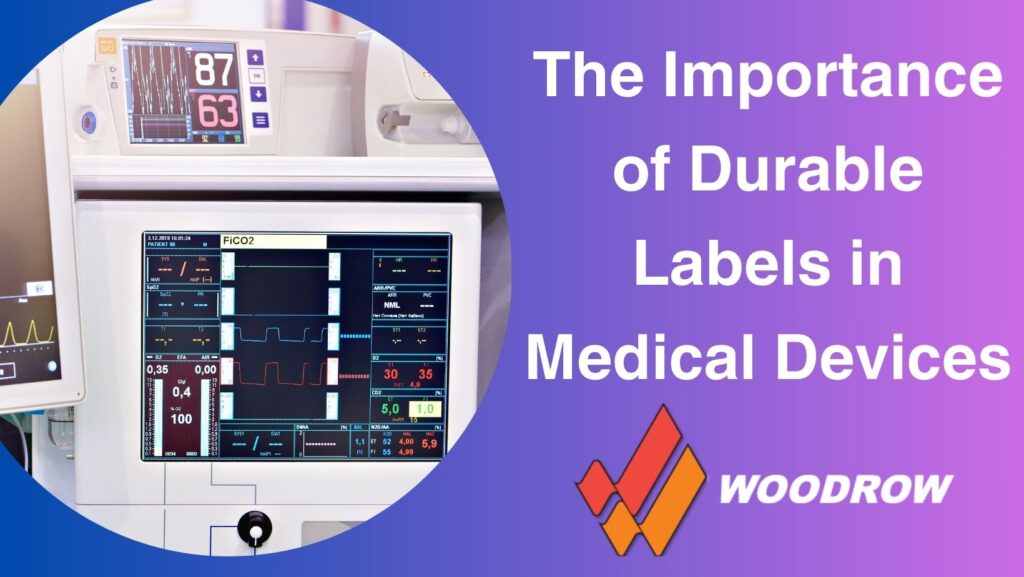
Understanding the Significance of Medical Device Labeling
Medical devices are vast and complex, encompassing simple bandages to advanced diagnostic machines. At the core of ensuring the safety and efficacy of these devices lies a seemingly small yet crucial component: the label. One cannot overstate the significance of durable labels in medical devices. These labels serve as the primary communication between the device, the healthcare professionals, and the patients. They provide essential information such as usage instructions, safety warnings, and regulatory compliance data. The durability of these labels is critical, as they must withstand various environmental conditions and handling scenarios without losing their legibility or adhesion.
The Role of Labels in Medical Devices: More Than Just a Sticker
Labels in medical devices serve as the primary tool for identification and tracking. They contain unique identifiers, such as serial numbers and barcodes, crucial for inventory management, maintenance schedules, and tracing the device’s lifecycle. In emergency scenarios, these labels can be lifesavers by providing quick access to vital information.
The healthcare industry is heavily regulated, and medical devices are no exception. Durable labels play a pivotal role in ensuring that devices comply with regulatory standards set by bodies like the FDA. They must display certifications, manufacturing details, and compliance symbols clearly and indelibly.
The most critical role of labels is to convey safety information, including instructions for use, warnings, and contraindications. In high-stress medical environments, the clarity and durability of this information can significantly impact patient safety.
Challenges in Medical Device Labeling: Navigating a Harsh Environment
Medical devices are exposed to harsh conditions, including sterilization processes, extreme temperatures, and chemical exposures. Labels must be designed to endure these conditions without degradation, ensuring the information remains accessible and intact throughout the device’s lifespan.
Regular handling, cleaning, and usage can lead to label wear and tear. The labels must be durable enough to resist abrasion, fading, and peeling, maintaining legibility and adhesion over time.
When you look at the ever-changing digital landscape, labels must evolve as medical devices become more advanced and integrate with digital systems. This includes incorporating innovative technologies like RFID and QR codes, which present additional challenges in terms of durability and readability.
Advantages of Durable Labels: Ensuring Reliability and Safety
- Longevity and Reliability
Durable labels extend the usable life of medical devices by ensuring that critical information remains accessible. This reliability is crucial in avoiding costly replacements and maintaining consistent performance standards.
- Enhanced Patient Safety
Durable labels directly contribute to patient safety by providing precise and enduring information. They help prevent misuse and errors in device operation, which are crucial in medical settings.
- Efficient Asset Management
Healthcare facilities can manage their assets more efficiently with clear and long-lasting labels. This leads to better inventory control, maintenance scheduling, and operational efficiency.
Materials and Technologies: The Backbone of Durable Labels
- Innovative Label Materials
The choice of materials is critical in the creation of durable labels. The most frequently chosen label Materials are polyester, polypropylene, and specialized adhesives for their ability to withstand extreme conditions.
- Advanced Printing Techniques
Printing technologies play a vital role in label durability. Techniques like thermal transfer, laser etching, and UV-resistant inks ensure that the labels remain legible and intact over time.
- Smart Label Technologies
Integrating intelligent technologies such as RFID chips and QR codes revolutionizes medical device labeling. These technologies provide durability and add layers of functionality, like real-time tracking and data storage.
Regulatory Standards for Label Durability: Navigating the Legal Landscape
The FDA sets stringent standards for medical device labeling, including requirements for durability. Compliance with these standards is a legal obligation and a commitment to quality and safety.
In the global market, medical devices must comply with various international standards. This includes the EU’s Medical Device Regulation (MDR) and the International Organization for Standardization (ISO) standards.
Meeting these diverse and often stringent regulatory requirements can be challenging. Manufacturers must ensure their labels are durable and compliant with all relevant regulations.
Best Practices in Label Design: Balancing Clarity and Durability
- Clarity and Legibility
The primary purpose of a label is to convey information. A clear label uses legible fonts, high-contrast colors, and a layout that is easy to understand, even under stressful conditions.
- Adherence to Guidelines
Following established guidelines and standards is crucial in label design. Those guidelines include considering the labels’ size, placement, and content to ensure they meet regulatory and practical requirements.
- User-Centered Design
Product development should design labels with the end user in mind. This involves understanding the environments in which the end consumer will use the device and ensuring that the labels are intuitive and accessible.
The Future of Medical Device Labeling: Embracing Innovation
The medical device industry is constantly evolving, and so are labeling technologies. Staying abreast of emerging trends is essential for manufacturers to remain competitive and compliant.
One of those trends is the integration of labeling with digital health systems, which has the potential to revolutionize the healthcare industry. Intelligent labels, equipped with sensors and other advanced technologies, can provide real-time data on medication adherence, dosage, and other essential metrics. Healthcare providers can leverage this data to improve patient outcomes and reduce the risk of adverse events. Additionally, intelligent labels can enable patients to take a more active role in their care by providing personalized information on dosage schedules, potential side effects, and other essential factors. Integrating labeling with digital health systems is an exciting development that can transform how we approach healthcare.
The Critical Role of Durable Labels in Medical Devices
In summary, product developers must understand that the importance of durable labels in medical devices must be considered during development. They are vital in ensuring safety, compliance, and efficiency in the healthcare industry. As technology advances, so must our approach to labeling, ensuring that these essential components continue to meet the demands of a dynamic and challenging environment.
Durable labels are a small but essential part of medical devices, which ensures safety, compliance, and efficiency. As the medical industry continues to evolve, so will the technologies and strategies for labeling, making it an ever-important topic for healthcare professionals and manufacturers alike.
—
FAQs
- Why are durable labels important in medical devices?
- What materials are commonly used for durable medical device labels?
- How do durable labels contribute to regulatory compliance?
- What are the challenges in designing labels for medical devices?
- How is technology influencing the future of medical device labeling?
- Can durable labels improve patient safety in healthcare settings?
